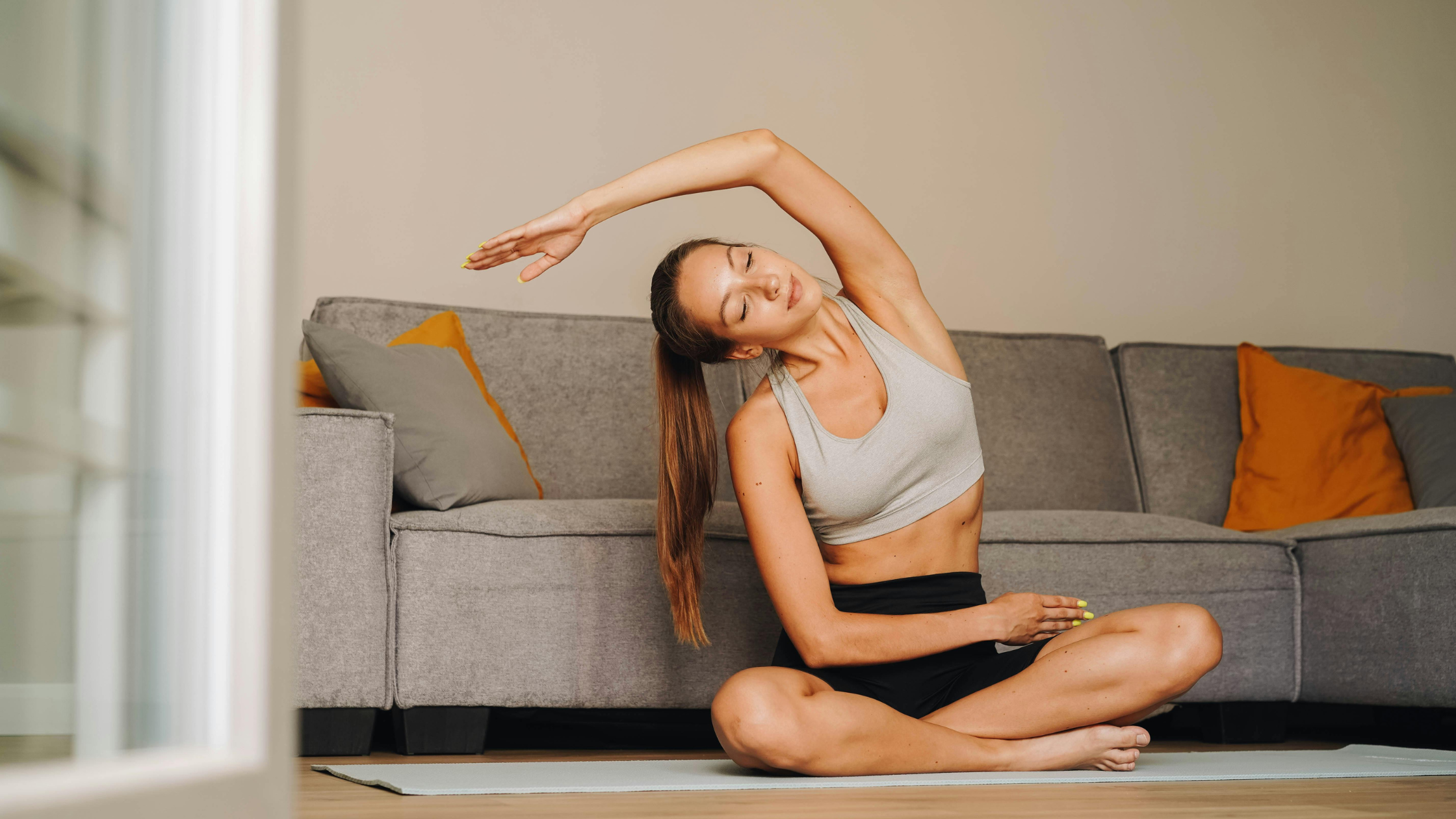If you are looking to track your health, you are in the right place. At iHeart Wellness, we have spent decades helping people take charge of their health, and focus on what truly matters for long-term wellness.
Because…In today’s world, you can track just about anything. Steps, calories, macros, sleep cycles, the list goes on. But tracking is only helpful if it gives you insights you can act on. Insights that actually move the needle for your health.
That is why we believe 2025 is the year to track smarter, not harder. And in this article, I’ll show you exactly which health metrics to focus on, why they matter, and how I use the iHeart Wellness apps to track my own health from the inside out.
Ready to dive in? Let’s go.
How to Track Your Health Smarter This Year
Most tracking apps focus on process-based metrics, like steps or calories.
Helpful? Sometimes. But those do not tell you how your health actually is.
You can walk 10,000 steps a day, log your macros, and still not know if you are reducing your disease risk or improving your longevity.
That is why at iHeart Wellness, we focus on metrics that give you the whole picture.
Metrics that reflect what is happening in your body, not just on the surface.
When you track things like Internal Age, HRV, and Orthostatic Response, you get real-time insights into how well your body is functioning. Not just today, but for the long run.
So, What Should You Track?
Here are the three metrics that Dr. Jess and his medical team recommend everyone to be tracking:
1. Internal Age, For Longevity and Overall Health
Measured with: iHeart Internal Age App
Internal Age tells you how well your body is aging on the inside, not just your chronological age.
It is based on your aortic stiffness - how flexible or stiff your aorta (your body’s main artery) is. When your aorta is flexible, blood flows easily, your heart works efficiently, and your organs stay well nourished.
When it stiffens, blood pressure rises, organ function suffers, and your risk of cardiovascular disease increases.
In fact, aortic stiffness is one of the strongest predictors of cardiovascular and cognitive decline, even more than age itself, according to the Journal of the American College of Cardiology.
For years, you could only measure this with a $25,000 hospital-grade machine.
Now? You can do it with your fingertip, using the iHeart Wellness Monitor and Internal Age app. The app uses a combination of:
-
Aortic Pulse Wave Velocity (PWV)
-
Heart Rate
-
Oxygen Saturation
...to calculate your Internal Age in just 30 seconds.
Why I love tracking this:
Personally, I find this so motivating, because this number stays. Unlike weight loss, which can bounce back & forth, when you improve your Internal Age through movement, breathwork, and stress management, the benefits are lasting.
(When I first tried it, after an injury, my Internal Age was 45, I was shocked. But after consistent yoga, workouts, and breathing practices, I lowered it to 33, and now 27. It’s been incredibly satisfying to see those results!)
2. HRV (Heart Rate Variability), For Stress Resilience and Nervous System Balance
Measured with: iHeart HRV App
Your stress response affects almost everything. From how well you sleep to how fast you recover and how energized you feel each day. That is why HRV is one of my favorite health metrics to track.
Because you might notice that on some days, you feel fine, but internally, your body is showing signs of stress.
And having that insight is so valuable, because it gives you a nudge to take action, whether that is doing some yoga, breathwork, or even journaling to release the tension.
That way, you can prevent that stress from building up and turning into something bigger, like unexpected anxiety, or even a panic attack. And at least for me, that’s huge!
What is HRV
Heart Rate Variability (HRV) measures the tiny changes in time between each heartbeat.
Those small fluctuations tell you how well your body is coping, adapting, and recovering, whether you are feeling stressed or not. A higher HRV means your body is flexible, resilient, and ready to handle whatever comes your way.
According to a 2019 study published in Frontiers in Psychology, higher HRV is directly linked to stronger resilience and better mental well-being.
A lower HRV means your system may be stuck in stress mode, even if you are not aware of it yet. Low HRV has been linked to anxiety, fatigue, poor sleep, and increased risk of chronic illness.
How to measure HRV
You can do this easily using the iHeart Wellness Monitor and the iHeart HRV App. In just a few minutes, you’ll see how your breathing, posture, exercise, and even your mindset affect your nervous system.
Here is what you’ll find:
-
Overall HRV Score (0–100): The higher the number, the better your body is balancing your stress response.
-
Poincaré Plot: A visual display of how your heart rate changes over time.
-
LF/HF Ratio: This tells you what mode your nervous system is in.
-
High ratio? You may be stuck in fight-or-flight (sympathetic dominance).
-
Low ratio? You are likely resting, healing, and digesting (parasympathetic dominance).
3. Orthostatic Response, For Brain Health and Energy Regulation
Measured with: iHeart Brain App
Orthostatic Response tells you all about the health of your autonomic nervous system. This is the part of your brain that controls everything you do not have to think about. Like breathing, heart rate, blood pressure, digestion, metabolism, and recovery.
When your autonomic nervous system is strong, you adapt to stress better. You recover faster. You feel more alert. Your brain is sharper. And your organs function more efficiently.
But when is it weaker? That is when you might experience fatigue or prolonged brain fog. And your body takes longer to bounce back after everyday stress or illness.
According to research published in Frontiers in Physiology, a delayed or weak Orthostatic Response is associated with poor autonomic nervous system function and has been linked to aging, fatigue, diabetes, and even neurodegenerative conditions like Parkinson’s and dementia.
So, what exactly is Orthostatic Response?
It is how quickly your heart and blood pressure adjust when you go from sitting to standing. That sudden shift tests how well your brain and body stay in balance. The faster and stronger the response, the more resilient your system is.
How to measure it
You guessed it, the iHeart Brain app. In just 5 minutes, you will see a graph of how your blood pressure responded, and over time, you can compare your results to optimal, delayed, or weakened responses in your PDF report.
Why we love it
Well, unlike other metrics, you cannot “game” this one. It cannot be tricked with deep breaths or sitting taller. Improving your response means you have made real, sustainable changes to your nervous system health. A true reason to celebrate!
PS: Two More Tools to Support You
Besides these three powerhouse apps, the iHeart Wellness suite also includes:
-
iHeart Record App: lets you track heart rate and oxygen saturation continuously, great for seeing trends during yin yoga, meditation, or recovery.
-
iHeart Remote App: lets you safely share your data with an iHeart-certified practitioner if you want more personalized wellness guidance.
I do not use the Remote app personally at the moment, but I love knowing it is there. If I ever want to deepen my journey, it gives me the option to connect with an expert and get actionable tips based on my data.

My Personal Discoveries Thanks to iHeart Wellness Apps
Here is what I love most about tracking my health this way:
It gives me clarity. I can see how my yoga, workouts, and breathwork are affecting my body, both instantly and over time.
I also learned that even though I tend to be an anxious person, my PWV stayed low, meaning my practices are protecting my long-term health, even if I still feel stressed some days. That alone was so reassuring.
And when I compared my results with a super zen friend who does not prioritize wellness practices, guess what? Their PWV was higher. That was a wake-up call, it is not about who seems more relaxed. It is about what your body is really doing inside.
Allow Yourself to Feel Inspired to Take Action
Tracking your Internal Age or HRV is a whole different feeling from tracking calories or BMI. It is not about short-term appearance. Instead, I like to think it’s about long-term resilience. Longevity. True health.
When I see my Internal Age go down, it motivates me way more than seeing a number on a scale. Because I know I am investing in my future self.
Final Thoughts on Tracking Your Health
If you want to track your health in 2025, start with what matters: Internal Age, HRV, Orthostatic Response.
These metrics give you true insights, not just surface-level numbers. They show you how your body is aging, how it is handling stress, and how strong your foundation really is.
This is what sustainable health and wellness look like. Not quick fixes. Not calorie-counting. Not one-size-fits-all advice. Instead, it is knowing what is working for YOU, seeing your progress in real time, and feeling the difference.
Ready to build your health from the inside out? Start measuring what matters.
Get the iHeart Wellness Monitor today, and discover the healthiest version of yourself. PS, for a limited time, the iHeart Wellness Monitor comes with a free pair of gel insoles, so you can build health from the ground up.





Share:
Why Breath is the First Step to Longevity (According to Science & iHeart)
Inner Calm, Outer Glow: How Regulating Your Nervous System Became 2025's Beauty Secret